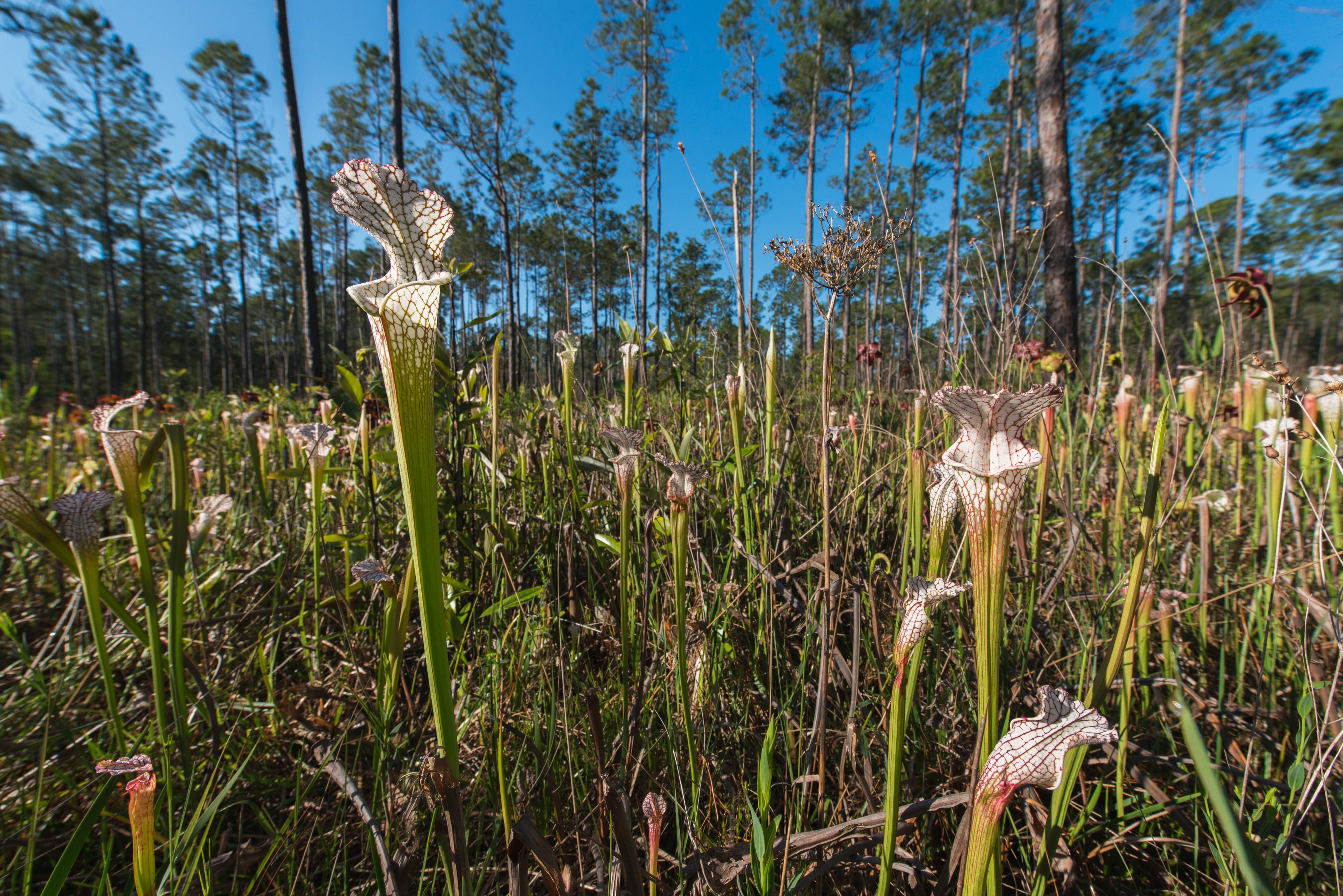Description
The Nature Conservancy’s 3,000+ acre Splinter Hill Bog Preserve is home to scattered stands of sandy upland longleaf pine forest and coastal blackwater streams. It also includes some of the most intact seepage bogs remaining along the Gulf Coast. These bogs boast an impressive 12 species of carnivorous plants, including some of the largest and most visually impressive white-topped pitcher plant (Sarracenia leucophylla) bogs in the world and healthy populations of Wherryi’s Sweet Red Pitcher Plant (Sarracenia rubra ssp. wherryi), a species found in only a small portion of the Gulf Coastal Plain.
In 2014, TNC renamed the nature preserve in honor of Mary Ruth McClellan Abronski, who retired with her husband Dick to Fairhope, Alabama. After residing in Alabama for many years, Mary Ruth donated her estate to conservation, a portion of which helped to expand TNC’s Splinter Hill Bog Preserve.




